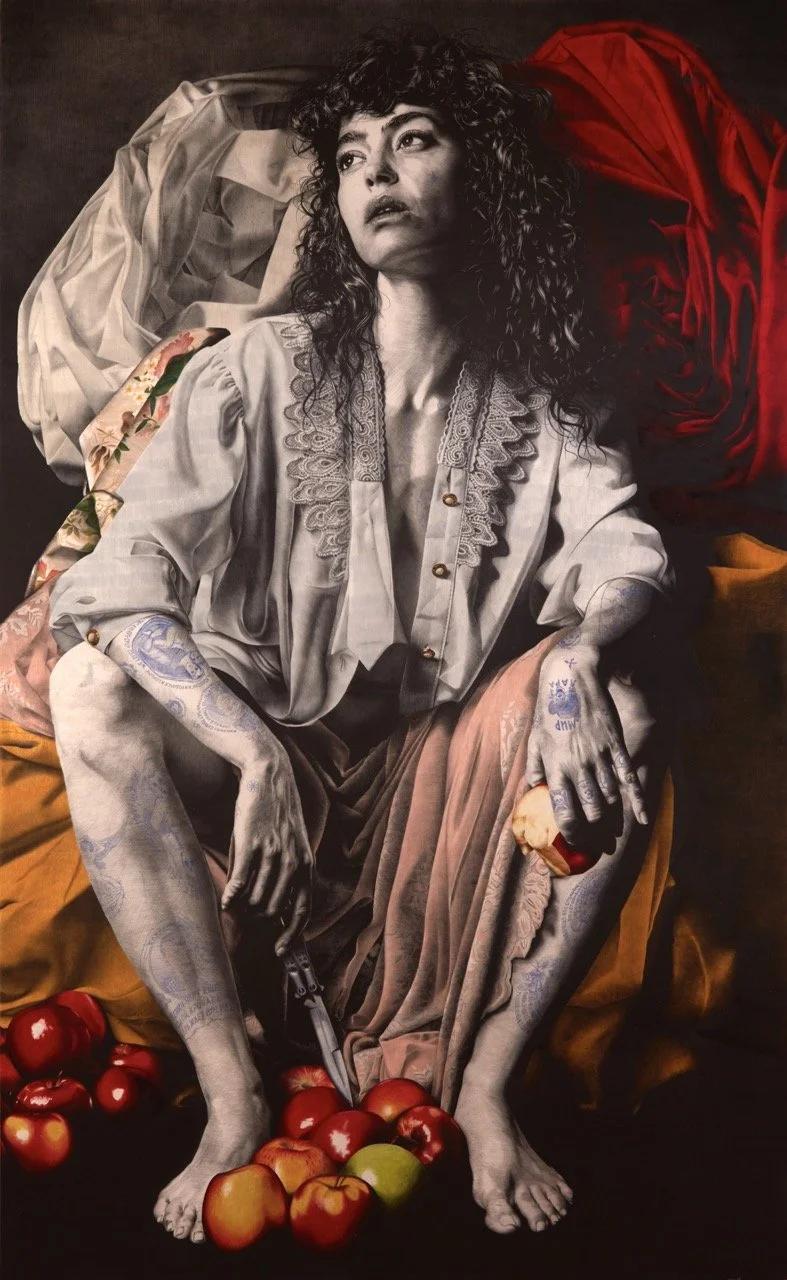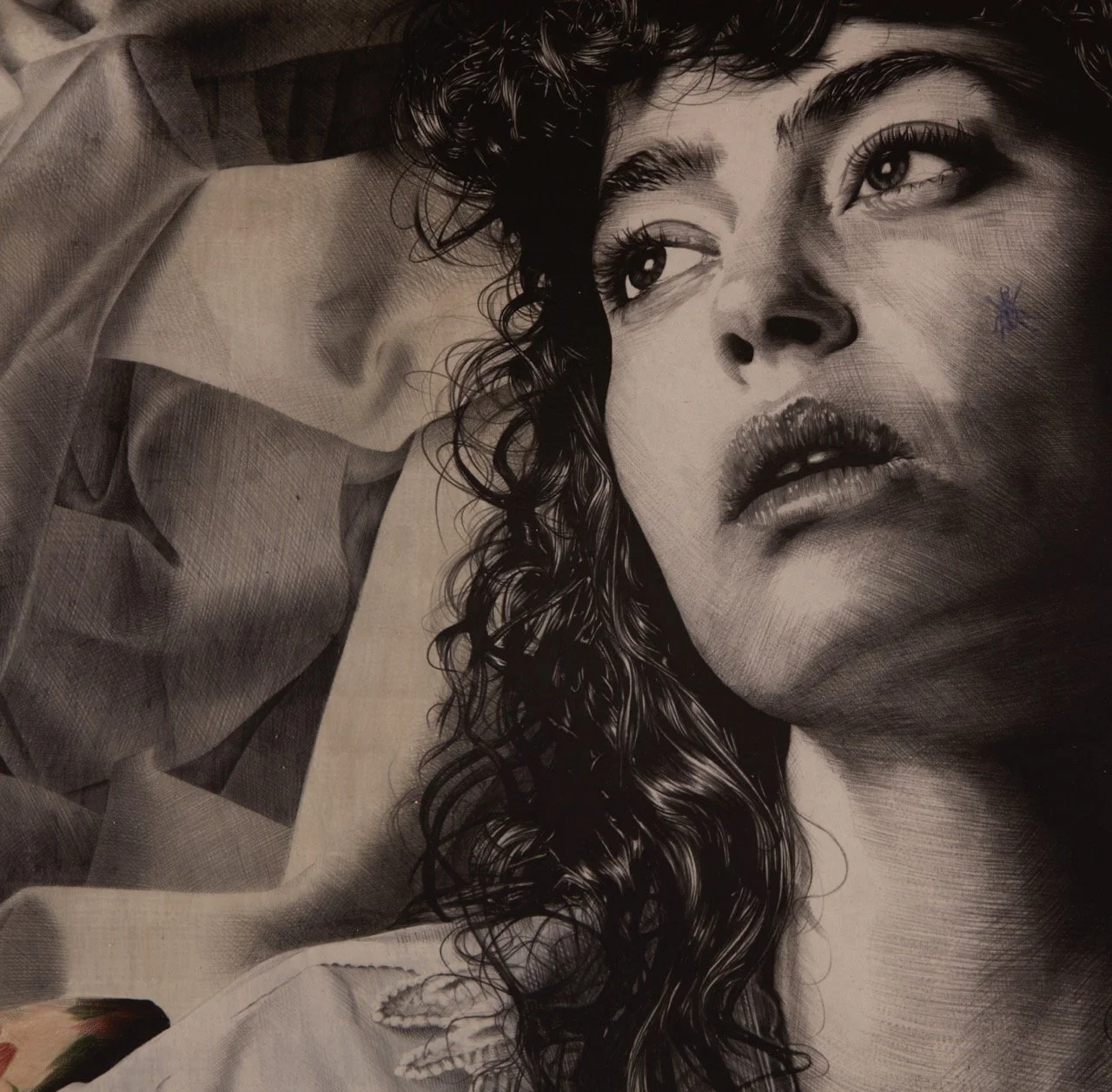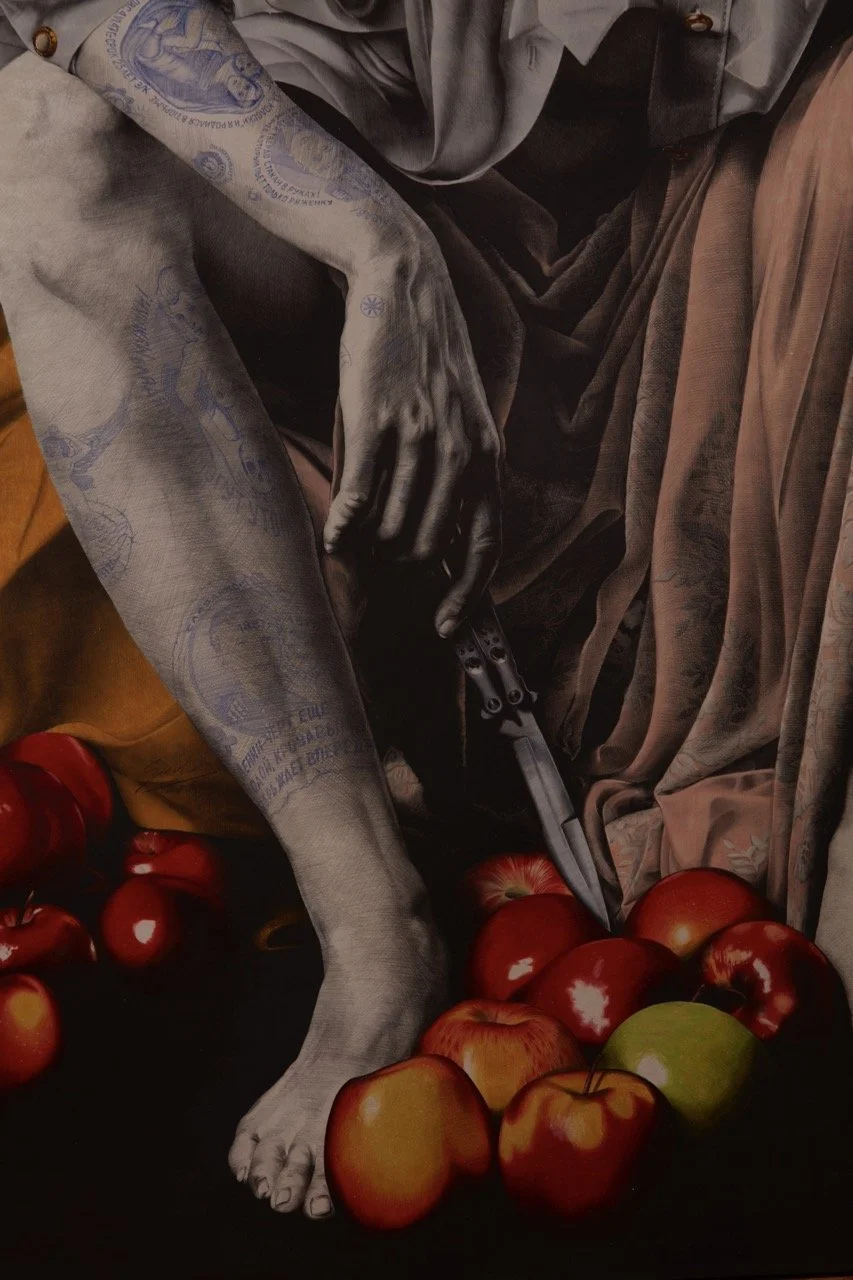The Apple of Lilith Nº1
Original
Size: 160 x 260 cm
Technique: graphic and colour pencils, Bic blue pen, charcoal, on paper 320 gr. Varnish finishes.
Through the eyes of the femme fatale
Lilith appears as the first wife of Adam, who was created at the same time and from the same clay as Adam, before Eve. She is mentioned in Biblical Hebrew in the Book of Isaiah, and in late antiquity in sources of Mandaean mythology and Jewish mythology from around the year 500 of our era. She also appears in writings from the 13th century by Isaac ben Jacob ha-Cohen, in the Yalqut Reubeni, a collection of Kabbalistic commentaries on the Pentateuch, and in Jewish folklore, for example in the Alphabet of Sirach (c. 700-1000 AD).
Adam and Lilith never found harmony together. "Why should I lie beneath you?" she asked. "I too was made from clay, and therefore I am your equal." When Adam tried to force her to obey, Lilith, enraged, uttered the magical name of God, rose into the air, and abandoned him.
Leaving Eden, she went to the shores of the Red Sea (home to many demons). There, she indulged in lust with them, giving birth to the lilim. When three angels of God came to find her (Snvi, Snsvi, and Smnglof), she refused...
Lilith was the first woman characterised by her impetuous rebellion, which also led her to embody the figure of an evil devil, as she did not fit into the societal model of women at the time. However, her seductive and man- devouring behaviour was the other side of the coin. In this sense, she was the first free woman in history and therefore traditionally considered a "femme fatale," the downfall of men. She was the woman to stay away from. She represented everything opposite to the faithful wife and selfless and obedient mother: a woman of captivating beauty and sensuality, always naked and provocative.
La femme fatale, as a term, was first coined by the Englishman Patrick Bade (1979), to refer to a female archetype in visual arts. This figure emerges as a response to sexophobia and misogyny, elements that throughout the centuries have acted as a common thread connecting political and social changes of the 19th century, explaining the insecurity and fear that arise within male society in the face of a new woman, rebelling against the patriarchal order, a role personified by Lilith, and a couple of centuries later, similar to this mythical and impetuous aura of Lilith in the women's struggle. Simone de Beauvoir is one of the writers who addresses, through literature, the essence of Lilith, the female sex intellectually revealed, capable of
intervening in the world alongside men, in the society of her time, and being a protagonist in the construction of a world together with them.
The harpy, the sphinx, the siren, the medusa, all of them gloomy and ancient creatures associated with death, surrounding the Femme Fatale. All of this, combined with Lilith's traits of rebellion, independence, and even vampirism, create a parallel to the feminine archetype. Throughout history, artists have portrayed Lilith in this way.
Gabriel Moreno introduces a contemporary Lilith in his pictographic language, who looks directly at the viewer, rematerializing the femme fatale, a woman who screams independence, rebellion, sensuality, strength that challenges society, and encompasses space with her feminine and profound energy, bringing forth the entire history of the myth of the goddess and the demoness.


